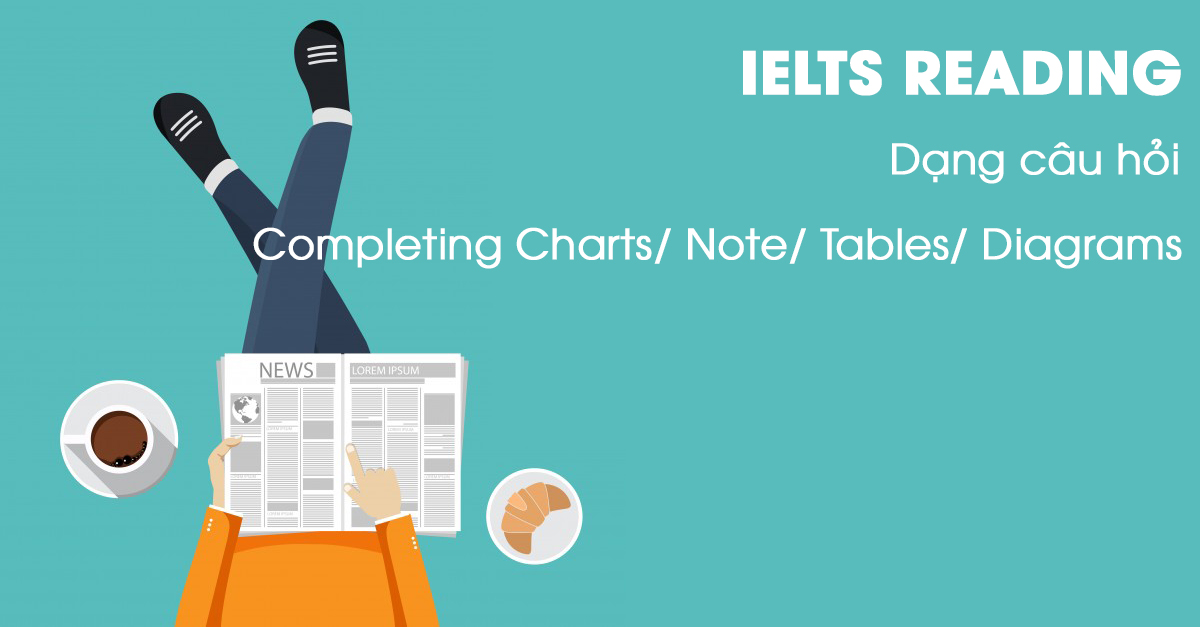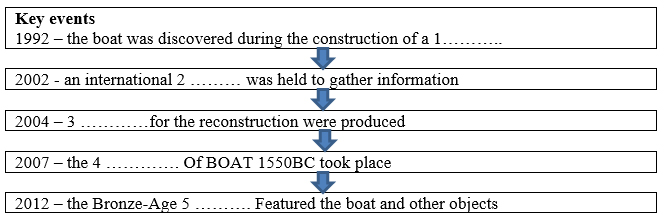

Hotline: 0906 201 222
Nhiều người đánh giá IELTS Reading là phần thi "dễ ăn" nhất trong cả 4 kỹ năng của đề thi IELTS. Điều này đúng hay sai? và Làm cách nào để ẵm trọn điểm số của phần thi này?
Hãy cùng các chuyên gia của Aland IELTS tìm hiểu qua bài viết dưới đây nhé.
Ngoài ra, nêu bạn đang tìm Tài liệu luyện thi IELTS Reading phù hợp với trình độ của mình, các bạn có thể tham khảo: TẠI ĐÂY
Không để các bạn đợi lâu hơn nữa! Chúng ta sẽ cùng bắt đầu tìm hiểu về bài thi IELTS Reading ngay thôi nào!
Có thể bạn đã biết, kỳ thi IELTS hiện hay có 2 hình thức thi phổ biến là IELTS Academic và General Training. Tuy là 2 hình thức thi phục vụ cho các nhóm đối tượng khác nhau, nhưng xét về cấu trúc đề thi IELTS của cả 2 hình thức này về cơ bản đều giống nhau.
Chẳng hạn như bài thi Reading trong kì thi IELTS, với cả 2 hình thức đều chứa 3 bài đọc với 40 câu hỏi và được thực hiện trong 40 phút. Các bài đọc trong phần thi Reading IELTS là các bài viết được trích từ báo, tạp chí hoặc sách và đều nói về các chủ đề chung, phổ quát và phù hợp với các vấn đề đang gây tranh cãi.
Đối với một người luyện thi IELTS thì phần thi Reading là phần thi được đánh giá có khả năng đạt được Band 6.0 trở lên cao nhất và dễ hơn các phần thi còn lại. Bởi, chỉ cần nắm được Chiến thuật làm bài IELTS reading và Mẹo trong lúc đọc đoạn văn, thí sinh hoàn toàn có thể nắm bắt và tìm thấy câu trả lời nhanh chóng từ các thông tin cho sẵn trong bài đọc.
Hơn thế nữa, các câu hỏi đều được trình bày theo thứ tự của bài đọc và dù có sự thay đổi của các câu gần nhau thì cũng không đến mức đánh đố thí sinh quá nhiều.

Tuy nhiên, dù đã được thử nghiệm và đánh giá trước nhưng độ khó của đề để đạt được điểm cao như mong muốn, thì việc luyện theo từng dạng bài với các típ và chiến thuật làm bài phù hợp là cực kì quan trọng.
Việc này đòi hỏi người đọc phải luyện IELTS reading tập rất nhiều để nhuần nhuyễn các kĩ năng trong Reading như: skimming (tìm main idea), scanning (tìm details), predicting (dự đoán nghĩa), paraphrasing (sử dụng cấu trúc khác hoặc từ đồng nghĩa để diễn đạt lại ý đó).
Đây là một trong những dạng bài phổ biết nhất trong bài thi IELTS Reading, và chúng xuất hiện hầu ở hầu hết cả 3 phần của bài thi này.
Vậy tại sao lại phải có 2 nhóm tên cho cùng 1 dạng bài nhỉ? Aland sẽ giải thích ngay cho các bạn trong bây giờ nhé.
Tuy nhiên, điểm khác biệt này không quá quan trọng vì cách làm của 2 dạng bài này là như nhau. Do đó, các bạn chỉ cần chú ý đến đề bài để viết đúng loại từ yêu cầu vào phần trả lời là được.
Tuy nhiên, dạng bài này lại là một trong những dạng bài dễ gây mất điểm của đa số thí sinh bởi vì luôn sẽ có sự nhầm lẫn giữa câu FALSE/ NO và NOT GIVEN. Và việc phân biệt được các câu NOT GIVEN là không hề dễ dàng. Bởi vì NOT GIVEN là các thông tin không được tìm thấy hoặc không đầy đủ nên chúng ta phải luôn luôn trung thành với thông tin trong bài đọc, không suy luận, không đoán hay nghĩ xa hơn dựa vào hiểu biết của bản thân.
Ngoài ra, những cái “bẫy” người đọc còn nằm ở những chi tiết nhỏ như:
Dạng bài này sẽ cho chúng ta 1 danh sách bao gồm các tiêu đề (headings) được đưa ra cùng với các đoạn văn ứng với phần câu hỏi. Nhiệm vụ của thí sinh trong dạng bài này là “nối” các headings phù hợp với từng đoạn văn.
Đây là một dạng bài thường xuất hiện trong bài thi IELTS Reading và được đánh giá là một dạng bài tương đối khó bởi các bạn thường sẽ gặp những vấn đề trong khi làm như không bắt được ý chính của cả đoạn hay đoạn văn có nhiều hơn 1 ý và còn rất nhiều những trở ngại khác. Tuy nhiên, không gì là không thể làm được. Aland sẽ bật mí cho các bạn kĩ thuật chính để có thể làm được dạng bài này một cách dễ dàng nhé
Kỹ thuật Skimming để nắm ý chính bài đọc. Áp dụng kĩ thuật này một cách nhuần nhuyễn sẽ giúp thí sinh tránh được việc chỉ tập trung vào đoạn đầu hay đoạn cuối của đoạn để tìm ra câu chủ đề, vì câu chủ đề có thể nằm ở giữa hay đôi khi trong đoạn không có câu chủ đề và rải rác trong cả đoạn văn. Ở dạng bài này, keyword sẽ có thể trở thành một cái bẫy thí sinh hữu hiệu bởi vì keywords không giúp chúng ta hiểu được ý chính của bài đọc mà chỉ hiểu được ý của headings.
Theo kinh nghiệm của Aland, dù đây là câu hỏi thường xuất hiện ở đầu tiên trong các bài đọc thì chúng ta cũng nên làm nó cuối cùng. Bởi vì đây là một dạng bài mang tính tổng quát. Bởi vậy, khi làm các dạng câu hỏi khác trước, bạn đã có thể đọc qua và nắm được tương đối ý của các đoạn trong bài.
Bên cạnh dạng bài Matching Headings chúng ta thường gặp trong bài thi IELTS Reading thì vẫn còn 3 dạng Matching khác – Matching information/ Matching endings và Matching features.
Matching information (Nối thông tin): Bạn sẽ được cung cấp 4 – 5 thông tin từ bài đọc và phải nối với đoạn văn tương ứng trong bài, dạng bài này sẽ tương tự với dạng Matching Headings.
Tuy nhiên, điểm khác biệt giữa Matching Headings và Matching Information là thay vì đọc cả đoạn để tìm ý chung cho cả đoạn (general ideas) thí sinh sẽ phải tìm các chi tiết (specific ideas). Các dạng thông tin được cho có thể bao gồm: a fact, an example, a reason, a summary, a definition….
Matching features (Nối đặc điểm): câu hỏi này trong IELTS Reading yêu cầu bạn phải tìm câu trả lời trong các lựa chọn cho trước (A, B, C…) phù hợp với từng câu hỏi dựa vào bài đọc. Với dạng câu hỏi này, người ra đề sẽ kiểm tra khả năng liên kết các sự việc, sự kiện,… Thông thường, bạn sẽ gặp các loại câu hỏi như sau:

Dạng bài trắc nghiệm đã là 1 dạng bài rất quen thuộc với tất cả các thí sinh. Dạng bài yêu cầu thí sinh lựa chọn đáp án đúng trong số những đáp án được đưa ra. Dạng bài này thường xuyên xuất hiện ở các hình thức:
Đối với dạng bài này, keywords đóng vai trò rất quan trọng để làm tốt dạng bài này. Bởi vì dựa vào keywords của câu hỏi và câu trả lời chúng ta có thể khoanh vùng được vị trí thông tin. Vì thế nắm chắc được từ/ cụm từ nào sẽ là keywords quyết định phần trăm chính xác của câu trả lời rất cao. Mặc dù vậy, thử thách của dạng bài này đó là phải nắm vững kĩ thuật paraphrase để không bị đánh lừa và mất thời gian trong lúc tìm thông tin cần thiết nhé.
Ở dạng bài này, các bạn cần sử dụng các từ/ số/ cụm từ trong bài đọc để trả lời các câu hỏi với số lượng từ/ số/ cụm từ trong bài đọc để trả lời các câu hỏi với số lượng từ/ số giới hạn cho trước. Như trong ví dụ, các bạn chỉ được điền tối đa 4 từ (NO MORE THAN FOUR WORDS). Câu hỏi này đòi hỏi các bạn phải tìm kiếm thông tin không chỉ nhanh mà còn phải chính xác, bởi vậy các bạn hãy luyện tập loại bài này thật nhuần nhuyễn nhé.
Đối với dạng bài này, yếu tố cẩn thận là cực kì quan trọng. Bởi vì khi bạn không đọc kĩ đề bài và không xác định được lượng từ/ số từ tối đa mà bạn được dùng để trả lời thì các bạn sẽ bị mất điểm hoàn toàn cho câu điền thừa/ thiếu. Đây cũng là một dạng bài mà vai trò của keywords được đánh giá là cực kì quan trọng.
Keywords ở đây là keywords rút ra từ câu hỏi và câu trả lời. Keywords như một tín hiệu để chúng ta xác định vị trí thông tin trong bài đọc. Tuy nhiên, việc tìm keywords không đơn giản, các bạn nên chú ý vào những từ/ cụm từ không hoặc khó biến đổi (tên riêng, năm, ngày tháng, thuật ngữ…) và sau đó hãy xem xét đến các từ mà có các dạng đồng nghĩa. Sau đó, một lần nữa, dù đã tìm được từ để điền vào thì chúng ta vẫn cần phải kiểm tra lại để đảm bảo đáp án đó phù hợp với nội dung câu hỏi, đủ số lượng từ và đúng dạng từ chưa.

Đây là một dạng bài nữa vừa có mặt trong IELTS Listening và cả Reading. Dạng bài này có một tên chung đó là Completion. Completion bản chất là một biến thể của Gap Filling. Tuy nhiên, completion không đơn giản vì mục tiêu của dạng bài này là kiểm tra khả năng xác định thông tin liên quan trong bài đọc và kĩ thuật paraphrase.
Một điểm nữa cần lưu ý đối với dạng này đó là thông tin không phải lúc nào cũng theo 1 thứ tự. Tuy nhiên, thông tin cần thiết luôn sẽ nằm theo hướng tập trung chứ không rải rác trong bài
Với dạng Chart Completion, thí sinh sẽ được cung cấp một biểu đồ mô tả các giai đoạn hay các bước của một quá trình nào đó.
Tương tự như dạng Chart Completion, ở Diagram các bạn sẽ phải hoàn thành những chỗ trống trong một biểu đồ cho trước, biểu đồ này có thể là một bản vẽ kỹ thuật của một cỗ máy hoặc một phát minh, một cái gì đó từ thế giới tự nhiên hoặc bản thiết kế hoặc kế hoạch.
Tương tự như dạng Short Answer, việc xác định giới hạn từ (Word limit) là cực kỳ quan trọng. Sau đó, việc tận dụng những gì đề cho quyết định rất nhiều đến độ thành công của chọn từ để điền vào. Khi chúng ta đọc sơ qua những gì có trên tables/ charts/ note/ diagrams, chúng ta có thể có được hình dung chung nhất về nội dung.
Đặc biệt, việc xác định charts và diagrams sẽ giúp chúng ta brainstorm được nhiều thông tin liên quan. Sau đó, keywords trong mỗi biểu đồ, bảng biểu là các dấu hiệu giúp dự đoán và quyết định được loại từ mà ta cần phải điền vào là gì, cũng như dựa vào keywords để xác định vị trí của thông tin cần điền.
Đối với dạng bài này, kĩ thuật scanning là vũ khí tối ưu để chinh phục dạng bài này. Kĩ thuật scanning giúp các bạn quét bài đọc và tìm các thông tin chi tiết một cách nhanh chóng. Và khi đã có được tất cả các câu trả lời như mong muốn thì chúng ta nên làm một bước kiểm tra cuối cùng để kiểm tra lại câu trả lời xem đã phù hợp về ngữ pháp hay chính tả chưa. Cẩn thận luôn là yếu tố quan trọng khi đi thi của các sĩ tử, đặc biệt là trong kì thi IELTS!

Ở dạng bài này, đề bài sẽ cung cấp cho bạn một vài câu và các chỗ trống, nhiệm vụ của bạn sẽ phải tìm các từ tương ứng trong bài đọc để điền chính xác.
Bởi vì bản chất dạng bài này là Completion nên các bước cơ bản chúng ta cần làm sẽ vẫn tương tự nhau. Xác định số lượng từ/ số tối đa mà bạn có thể điền. Đọc qua các vị trí cần điền và gạch chân tất cả key words để xác định được vị trí thông tin trong bài đọc, đồng thời xác định vị trí đó cần điền loại từ gì.
Tuy nhiên, thông thường key words sẽ là một trở ngại lớn nếu chúng ta chỉ dựa vào key words để tìm thông tin cần điền, mà không có sự chọn lọc kĩ càng. Lí do cho tình huống này là vì người ra đề sẽ hay sử dụng kĩ thuật paraphrase để đánh lừa và làm mất thời gian của thí sinh hơn. Vì thế, hãy chú ý đến các thuật ngữ hoặc các từ/ cụm từ khó paraphrase để xác định vị trí thông tin nhanh hơn.

Each correct answer scores one mark
You should spend about 20 minutes on Question 1-13, which are based on Reading
Passage 1 below
THE DOVER BRONZE - AGE BOAT
A beautifully preserved boat, made around 3000 years ago and discovered by chance in a muddy hole, has had a profound impact on archaeological research.
It was 1992. In England, workmen were building a new road through the heart of Dover, to connect the ancient port and the Channel Tunnel, which, when it opened just two years later, was to be the first land link between Britain and Europe for over 10000 years. A small team from the Canterbury Archaeological Trust (CAT) worked alongside the workmen, recording new discoveries brought to light by the machines.
At the base of a deep shaft six metres below the modern streets a wooden structure was revealed. Cleaning away the waterlogged site overlying the timbers, archaeologists realized its true nature. They had found a prehistoric boat, preserved by the type of sediment in which it was buried. It was then name the Dover Bronze-Age Boat.
About nine metres of the boat’s length was recovered; one end lay beyond the excavation and had to be left. What survived consisted essentially of four intricately carved oak planks: two on the bottom, joined along a central seam by complicated system of wedges and timbers, and two at the side, curved and stitched to the others. The seams had been made watertight by pads of moss, fixed by wedges and yew stitches.
The timbers that closed the recovered end of the boat had been removed in antiquity when it was abandoned, but much about its original shape could be deduced. There was also evidence for missing upper side planks. The boat was not a wreck, but had been deliberately discarded, dismantled and broken. Perhaps it had been “ritually killed” at the end of its life, like other Bronze-Age objects.
With hindsight, it was significant that the boat was found and studied by mainstream archaeologists who naturally focused on its cultural context. At the time, ancient boats were often considered only from a narrower technological perspective, but news about the Dover boat reached a broad audience. In 2002, on the tenth anniversary of the discovery, the Dover Bronze-Age Boat Trust hosted a conference, where this meeting of different traditions became apparent. Alongside technical papers about the boat, other speakers explored its social and economic contexts, and the religious perceptions of boats in Bronze-Age societies. Many speakers came from overseas, and debate about cultural connections was renewed.
Within seven years of excavation, the Dover boat had been conserved and displayed, but it was apparent that there were issues that could not be resolved simply by studying the old wood. Experimental archaeology seemed to be the solution: a boat reconstruction, half-scale or full-sized, would permit assessment of the different hypotheses regarding its build and the missing end. The possibility of returning to Dover to search for the boat’s unexcavated northern end was explored, but practical and financial difficulties were insurmountable - and there was no guarantee that the timbers had survived the previous decade in the changed environment.
Detailed proposals to reconstruct the boat were drawn up in 2004. Archaeological evidence was beginning to suggest a Bronze-Age community straddling the Channel, brought to together by the sea, rather than separated by it. In a region today divided by languages and borders, archaeologists had a duty to inform the general public about their common cultural heritage.
The boat project began in England but it was conceived from the start as European collaboration. Reconstruction was only part of a scheme that would include a major exhibition and an extensive educational and outreach program. Discussions began early in 2005 with archaeological bodies, universities and heritage organizations either side of the Channel. There was much enthusiasm and support, and an official launch of the projects was held at an international seminar in France in 2007. Financial support was confirmed in 2008 and the project then named BOAT 1550BC got under way in June 2011.
A small team began to make the boat at the start of 2012 on the Roman Lawn outside Dover museum. A full-scale reconstruction of a mid-section had been made in 1996, primarily to see how Bronze-Age replica tools performed. In 2012, however, the hull shape was the centre of the work, so modern power tools were used to carve the oak planks, before turning to prehistoric tools for finishing. It was decided to make the replica half-scale for reasons of cost and time, and synthetic materials were used for the stitching, owing to doubts about the scaling and tight timetable.
Meanwhile, the exhibition was being prepared ready for opening in July 2012 at the Castle Museum in Boulogne-sur-Mer. Entitled “Beyond the Horizon: Societies of the Channel & North Sea 3500 years ago”, it brought together for the first time a remarkable collection of Bronze-Age objects, including many new discoveries for commercial archaeology and some of the great treasure of the past. The reconstructed boat, as a symbol of the maritime connections that bound together the communities either side of the Channel, was centerpiece
Question 1-5
Complete the flow-chart below
Choose ONE WORD ONLY from the text for each answer.
Write your answers in boxes 1-5 on your answer sheet.

Question 6-9
Do the following statements agree with the information given in the text?
In boxes 6-9 on your answer sheet, write
|
TRUE |
if the statement agrees with the information |
|
FALSE |
if the statement contradicts the information |
|
NOT GIVEN |
if there is no information on this |
6. Archaeologists realized that the boat had been damaged on purpose.
7. Initially, only the technological aspects of the boat were examined.
8. Archaeologists went back to the site to try and find the missing northern end of the boat.
9. Evidence found in 2004 suggested that Bronze-Age Boat had been used for trade.
Question 10-13
Answer the question below
Choose NO MORE THAN THREE WORDS AND/OR A NUMBER form the text for each answer.
Write your answers in boxes 10-13 on your answer sheet.
10. How far under the ground was the boat found?
11. What natural material had been secured to the boat to prevent water entering?
12. What aspect of the boat was the focus of the 2012 reconstruction?
13. Which two factors influenced the decision not to make a full-scale reconstruction of the boat?
You should spend about 20 minutes on Question 14-26, which are based on Reading Passage 2 below.
| Test Tip Read the title and introduction of the passage and decide what the main topic is. |
Some passages are divided into paragraphs that have cleat themes. You may have to match paragraphs to heading or find information in the paragraphs. Always do a quick read of these questions first. Then quickly read passage to get an overall idea of the content.
THE CHANGING ROLE OF AIRPORTS
Airports continue to diversity their role in an effort to generate income. Are business meeting facilities the next step? Nigel Halpern, Anne Graham and Rob Davidson investigate.
A In recent times developing commercial revenues has become more challenging for airports due to a combination of factors, such as increased competition from Internet shopping, restrictions on certain sales, such as tobacco, and new security procedures that have had an impact on the dwell time of passengers. Moreover, the global economic downturn has caused a reduction in passenger numbers while those that are travelling generally have less money to spend. This has meant that the share of revenue from non-aeronautical revenues actually peaked at 54% at the turn of the century and has subsequently declined slightly. Meanwhile, the pressures to control level of aeronautical revenues are strong as ever due to the poor financial health of many airlines and the rapid rise of the low-cost carrier sector.
B Some of the more obvious solutions to growing commercial revenues, such as extending the merchandising space or expanding the variety of shopping opportunities, have already been tried to their limit at many airports. A more radical solution is to find new sources of commercial revenue within the terminal, and this has been explored by many airports over the last decade or so. As a result, many terminals are now much more than just shopping malls and offer an array of entertainment, leisure, and beauty and wellness facilities. At this stage of facilities provision, the airport also has the possibility of taking on the role of the final destination rather than merely a facilitator of access.
C At the same time, airports have been developing and expanding the range of services that they provide specifically for the business traveler in the terminal. This includes offering business centres that supply support services, meeting or conference rooms and other space for special events. Within this context, Jarach (2001) discussed how dedicated meeting facilities located within the terminal and managed directly by the airport operator may be regarded as an expansion of the concept of airline lounges or as a way to reconvert abandoned or underused areas of terminal building. Previously it was primarily airport hotels and other facilities offered in the surrounding area of the airport that had the potential to take on this role and become active as a business space (McNeill, 2009)
D When an airport location can be promoted as a business venue, this may increase the overall appeal of the airport and help it become more competitive in both attracting and retaining airlines and their passengers. In particular, the presence of meeting facilities could become one of the determining factors taken into consideration when business people are choosing airlines and where they change their planes. This enhanced attractiveness itself may help to improve the airport operator’s financial position and future prospect, but clearly this will be dependent on the competitive advantage that the airport is able to achieve in comparison with other venues.
E In 2011, an online airport survey was conducted and some of the areas investigated included the provision and use of meeting facilities at airports and the perceived role and importance of these facilities in generating income and raising passenger numbers. In total, there were responses from staff at 154 airports and 68% of these answered “yes” to the question: Does your airport own and have meetings facilities available for hire? The existence of meeting facilities therefore seems high at airports. In addition, 28% of respondents that did not have meeting facilities stated that they were likely to invest in them during the next five years. The survey also asked to what extent respondents agreed or disagreed with a number of statements about the meeting facilities at their airport. 49% of respondents agreed that they have put more investment into them during recent years; 41% agreed that they would invest more in the immediate future. These are fairly high proportions considering the recent economic climate.
F The survey also asked airports with meeting facilities to estimate what proportion of users are from the local area, i.e. within a 90-minute drive from the airport, or from abroad. Their findings show that meeting facilities provided by the majority of respondents tend to serve local versus non-local or foreign needs. 63% of respondents estimated that over 60% of users are from the local area. Only 3% estimated that over 80% of users are form abroad. It is therefore not surprising that the facilities are of limited importance when it comes to increasing use of flights at the airport: 16% of respondents estimated that none of the users of their meeting facilities use flights when travelling to or from them, while 56% estimated that 20% or fever of the users of their facilities use flights.
G The survey asked respondents with meeting to estimate how much revenue their airport earned from its meeting facilities during the last financial year. Average revenue per airport was just $12,959. Meeting facilities are effectively a non-aeronautical revenue from this meeting facilities; none generated more than 40%. Given the focus on local demand, it is not surprising that less than a third of respondents agreed that their meeting facilities support business and tourism development in their home region.
H The findings of this study suggest that few airports provide meetings facilities as a serious commercial venture. It may be that, as owners of large property, space is available for meeting facilities at airports and could play an important role in serving the needs of the airport, its partners, and stakeholders such as government and the local community. Thus, while the local orientation means that competition with other airports is likely to be minimal, competition with local providers of meetings facilities is likely to be much greater.
Question 14-18
The next has eight paragraphs, A-H.
Which paragraph contains the following information?
Write the correct letter, A-H, in boxes 14-18 on your answer sheet.
N.B You may use any letter more than one.
14. evidence that a significant number of airports provide meeting facilities
15. a statement regarding the fact that no further developments are possible in some areas of airport trade
16. reference to the low level of income that meeting facilities produce for airports
17. mention of the impact of budget airlines on airport income
18. examples of airport premises that might be used for business purposes
Question 19-22
Complete the sentences below
Choose NO MORE THAN TWO WORDS from the text for each answer. Write your answers in boxes 19-22 on your answer sheet.
19. The length of time passengers spend shopping at airports has been affected bay updated………..
20. Airports with wide range of recreational facilities can become a ………. for people rather than a means to travel.
21. Both passengers and ……….. may feel encouraged to use and develop a sense of loyalty towards airports that market their business services.
22. Airports that supply meeting facilities may need to develop a ………. over other venues.
Question 23-26
Complete the summary below
Choose NO MORE THAN TWO WORDS from the text for each answer.
Write your answers in boxes 23-26 on your answer sheet.
SURVEY FINDINGS
Despite financial constraints due to the 23……………, a significant percentage of airports provide and wish to further airport business meeting facilities. Also, just under 30% of the airports surveyed plan to provide these facilities within 24 …………… However, the main users of the facilities are 25 …………. And as many as 16% of respondents to the survey stated that their users did not take any 26 …………. at the airport.
You should spend about 20 minutes on Question 27-40, which are based on Reading Passage 3 below.
IS PHOTOGRAPHY ART?
This may seem a pointless question today. Surrounded as we are by thousands of photographs, most of us take for granted that, in addition to supplying information and seducing customers, camera images also serve as decoration, afford spiritual enrichment, and provide significant insights into the passing scene. But in the decades following the discovery of photography, this question reflected the search for the ways to fit the mechanical medium into the traditional schemes of artistic expression.
The much-publicized pronouncement by painter Paul Delaroche that the daguerreotype* signaled the end of painting is perplexing because this clever artist also forecast the usefulness of the medium for graphic artists in a letter written in 1839. Nevertheless, it is symptomatic of the swing between the outright rejection and qualified acceptance of the medium that was fairly typical of the artistic establishment. Discussion for the role of photography in art was especially spirited in France, where the internal policies of the time had created a large poor of artists, but it was also taken up by important voices in England. In both countries, public interest in this topic was a reflection of the belief that national stature and achievement in the arts were related.
From the maze of conflicting statements and heated articles on the subjects, three main positions about the potential of camera art emerged. The simplest, entertained by many painters and a section of the public, was that photographs should not be considered “art” because they were made with a mechanical device and by physical and chemical phenomena instead of by human hand and spirit; to some, camera images seemed to have more in common with fabric produced by machinery in a mill than with handmade creations fired by inspiration. The second widely held view, shared by painters, some photographers, and some critics, was that photographs would be useful to art but should not be considered equal in creativeness to drawing and painting. Lastly, by assuming that the process was comparable to other techniques such as etching and lithography, a fair number of individuals realized that camera images were or could be as significant as handmade works of art and that they might have a positive influence on the arts and on culture in general.
Artists reacted to photography in various ways. Many portrait painters – miniaturists in particular – who realized that photography represented the “handwriting on the wall” became involved with daguerreotyping or paper photography in an effort to save their careers; some incorporated it with painting, while others renounced painting altogether. Still other painters, the most prominent among them the French painter, Jean-Auguste-Dominique Ingres, began almost immediately to use photography to make a record of their own output and also to provide themselves with source material for poses and backgrounds, vigorously denying at the same time its influence on their vision or its claims as art.
The view that photographs might be worthwhile to artists were enunciated in considerable detail by Lacan and Francis Wey. The latter, an art and literary critic, who eventually recognized that camera images could be inspired as well as informative, suggested that they would lead to greater naturalness in the graphic depiction of anatomy, clothing, likeness, expression, and landscape. By studying photographs, true artists, he claimed, would be relieved of menial tasks and become free to devote themselves to the more important spiritual aspects of their work.
Wey left unstated what the incompetent artist might do as an alternative, but according to the influential French critic and poet Charles Baudelaire, writing in response to an exhibition of photography in 1859, lazy and untalented painters would become photographers. Fired by a belief in art as an imaginative embodiment of cultivated ideas and dreams. Baudelaire regarded photography as ‘a very humble servant of art and science’; a medium largely unable to transcend ‘external reality’. For this critic, photography was linked with ‘the great industrial madness’ of the time, which in his eyes exercised disastrous consequences on the spiritual qualities of the life and art.
Eugene Delacroix was the most prominent of the French artists who welcomed photography as help-mate but recognized its limitations. Regretting that ‘such a wonderful invention’ had arrived so late in his lifetime, he still took lessons in daguerreotyping, and both commissioned and collected photographs. Delacroix’s enthusiasm for the medium can be sensed in a journal entry noting that if photographs were used as they should be, an artist might ‘raise himself to heights that we do not yet know’.
The question of whether the photograph was document or art aroused interest in England also. The most important statement on this matter was an unsigned article that concluded that while photography had a role to play, it should not be ‘constrained’ into ‘competition’ with art; a more stringent viewpoint led critic Philip Gilbert Hamerton to dismiss camera images as ‘narrow in range, emphatic in assertion, telling one truth for ten falsehoods’.
These writers reflected the opposition of a section of the cultural elite in England and France to the ‘cheapening of art’ which the growing acceptance and purchase of camera pictures by the middle class represented. Technology made photographic image a common sight in the shop windows of Regent Street and Piccadilly in London and the commercial boulevards of Paris. In London, for example, there were at the time some 130 commercial establishments where portraits, landscapes, and photographic reproductions of works of art could be bought. This appeal to the middle class convinced the elite that photographs would foster a desire for realism instead of idealism, even though some critics recognized that the work of individual photographers might display an uplifting style and substance that was consistent with the defining characteristics of art.
Questions 27-30
Choose the correct letter, A, B, C or D.
Write your answers in boxes 27-30 on your answer sheet.
27 What is the writer’s main point in the first paragraph?
A. Photography is used for many different purposes.
B. Photographers and artists have the same principal aims.
C. Photography has not always been a readily accepted art form.
D. Photographers today are more creative than those of the past.
28 What public view about artist was shared by the French and the English?
A. that only artists could reflect a culture’s true value
B. that only artists were qualified to judge photography
C. that artists could lose work as a result of photography
D. that artists success raised a country’s international profile
29 What does the writer mean in line 59 by ‘the handwriting on the wall’?
A. an example of poor talent
B. a message that cannot be trusted
C. an advertisement for something new
D. a signal that something bad will happen
30 What was the result of the widespread availability of photographs to the middle classes?
A. The most educated worried about its impact on public taste.
B. It helped artists appreciate the merits of photography.
C. Improvements were made in photographic methods.
D. It led to a reduction in the price of the photographs.
Question 31-34
Complete the summary of Paragraph 3 using the list of words, A-G, below.
Write your answer in boxes 31-34 on your answer sheet.
|
A inventive B similar |
C beneficial D next |
E mixed F justified |
G inferior |
Camera art
|
In the early days of photography, opinions on its future were
|
Questions 35-40
Look at the following statements and the list of people, A-E, below.
Match each statement with the correct persons.
Write the correct letter, A-E, in boxes 35-40 on your answer sheet.
35. He claimed that photography would make paintings more realistic.
36. He highlighted the limitations and deceptions of the camera.
37. He documented his production of artwork by photographing his works.
38. He noted the potential for photography to enrich artistic talent.
39. He based some of the scenes in his paintings on photographs.
40. He felt photography was part of the trend towards greater mechanization.
|
A. Jean-Auguste- B. Dominique Ingres C. Francis Wey |
C. Charles Baudelaire D. Eugene Delacroix E. Philip Gilbert Hamerton |
Hi vọng rằng với bài chia sẻ rất chi tiết như trên, các bạn hoàn toàn có thể tự ôn luyện IELTS Reading tại nhà một cách hiệu quả nhất. Đây cũng là cuốn cẩm nang học IELTS Reading rất chi tiết và đầy đủ mà bất kì ai đang và sẽ định thi IELTS đều cần phải tham khảo.
Chúc các bạn học tập hiệu quả!